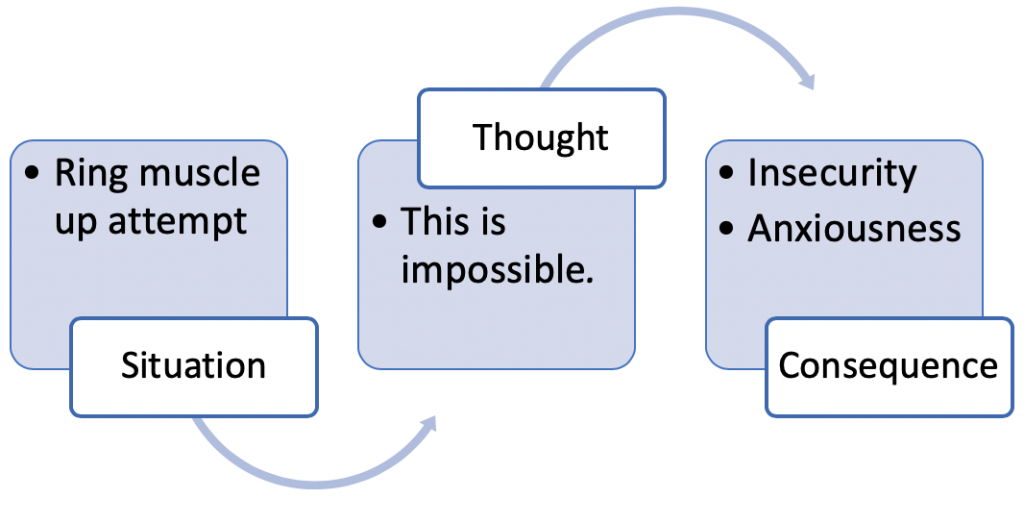I’ve said a thing or two about cognitive restructuring but I haven’t dedicated too much time to it. It’s crazy considering it’s the bread and butter of any psychologist who follows the CBT, so here we go!
Cognitive restructuring is the active modification of our thought content. The tool is the ABC model created by psychologist Albert Ellis in the framework of his Rational Emotive Therapy (1973). The premise is that cognition, emotion and behavior are mutually inclusive rather than pure and separate entities.
In the ABC model, the A refers to activating situations, B to beliefs about these events and C to emotional and behavioral consequences. This sequence comes to say that what we think depends on what we live and deeply influences what we do. It’s only logical that if we wish to act a certain way, we depend on our thoughts to guide us in the intended direction.
Examples:

Performing your first ring muscle up is hard enough…imagine sprinkling it with a touch of insecurity to make that much harder.
But don’t you worry because luckily we don’t have a passive role in writing our thoughts, it’s actually quite the opposite. I can’t change the situation but I can change the way I look at it. Let’s try one more time, shall we?

Careful now! This doesn’t mean you’ll get it on your first try. But avoiding negative self-talk will allow to try as many times as needed until you achieve the goal. And it’s not about building up a fake sense of confidence but being realistic and reality is that if you practice a couple hundred times…you will get it eventually.
What if the situation won’t ever change?
This is the high-level division. Changing your thought process in regards to an emotionally charged situation that can’t ever change can be very, very complicated. But just like the muscle up… after a couple hundred attempts, you end up getting it.
Imagine you lose a competition at the very end to an execution error in the final event. All those training hours suddenly become useless, you feel like you’ve let down friends, family and everyone who rooted for you. It’s quite normal to feel beat down and to even stay away from CrossFit for a while.
But that can’t last forever. Worst case scenario, that situation leaves a crack in your self-confidence that, in the long run, keeps you from tapping your real potential.
Remember: our thought process is a dynamic one. We can change it at our own convenience – for better or for worst -. Try to keep your thoughts in the light for the most part to keep moving forward (even when you least feel like it).
Ellis, A. (1973). Rational-emotive therapy (pp. 32-44). Big Sur Recordings.
